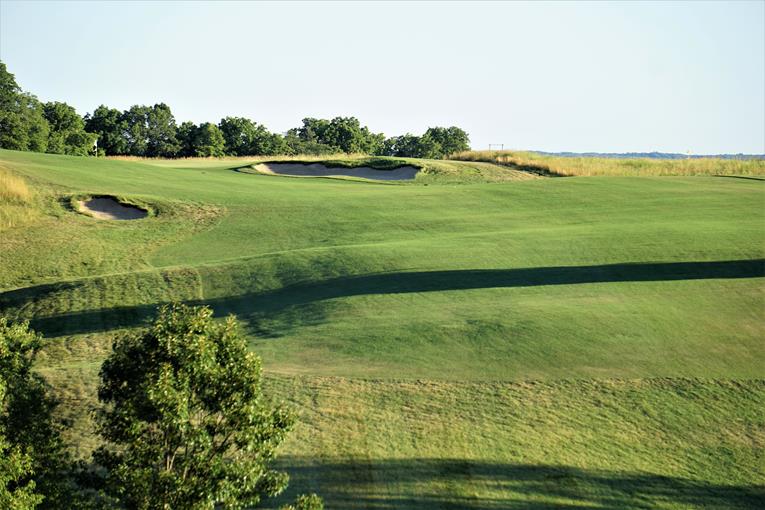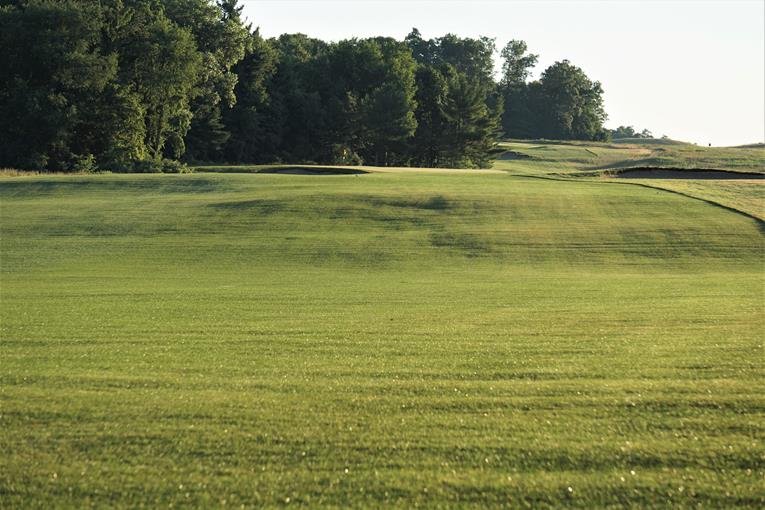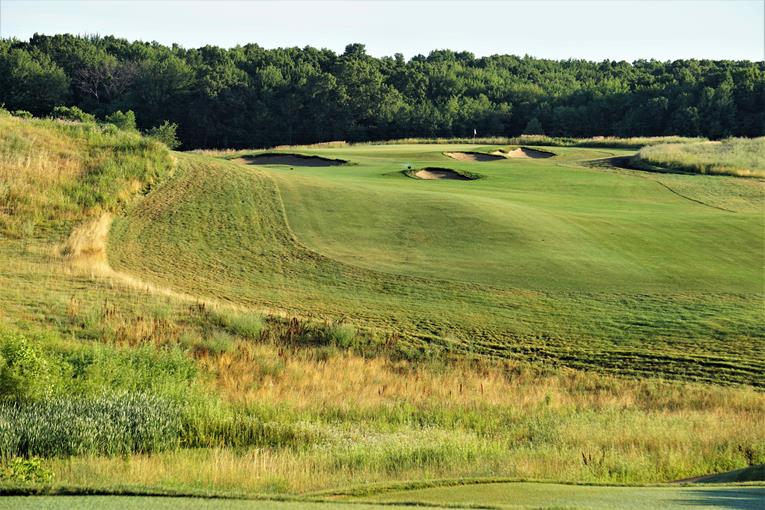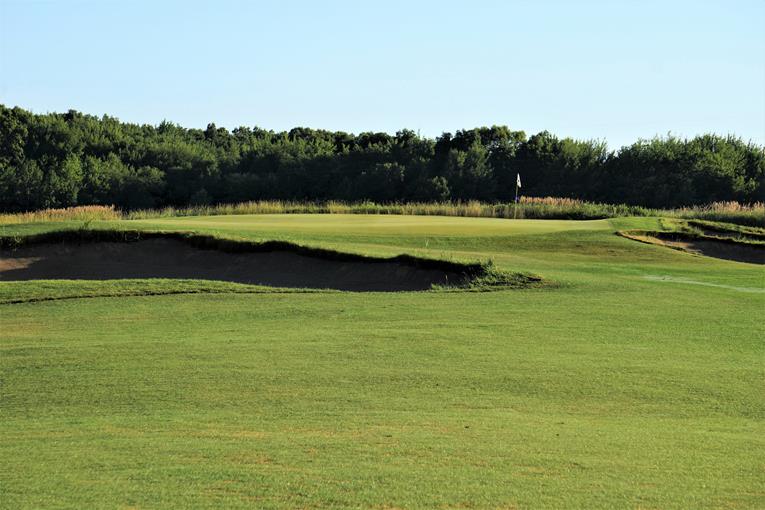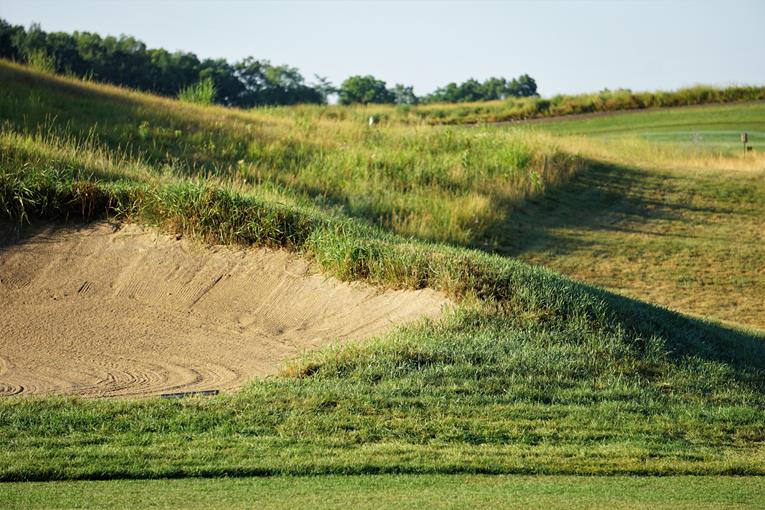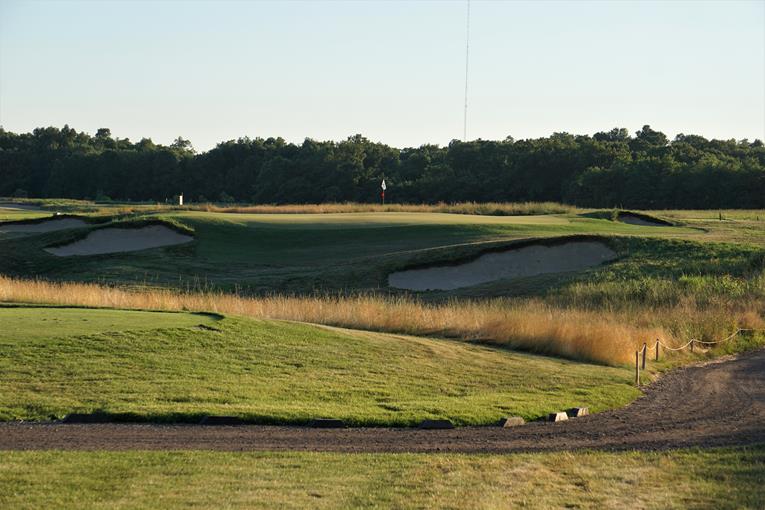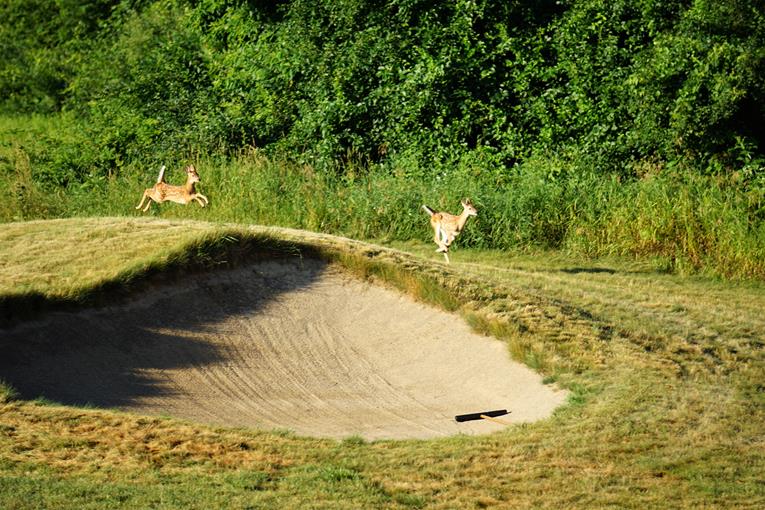Stoatin Brae
Michigan, United States of America
Family stories hold their own unique appeal. Old and Young Tom Morris and the Park family from Musselburgh did much to shape the golf’s early history and ultimately, the sport’s direction. In America, William Fownes carried on what his father began at Oakmont, where they converted Pennsylvania farmland into a design masterpiece. Herbert Walker Bush and his clan have long held a special place in American golf. On a different scale, Darl and Lethea Scott could hardly have known what would unfold when they began construction of Gull Lake View West in 1962. The course eventually opened for play three years later and while one might assume that is where the story ended – the Scotts were just getting started! They added a second course, Gull Lake View East, ten years later and Stonehedge South the following decade. Today, the family owns and operates a six course complex that encompasses more than 2,000 acres in Kalamazoo County, Michigan. They did it their way, from scratch and the thriving resort represents one of those delightfully distinctive American success stories.
Stoatin Brae, the most recent addition, opened in 2017 and is a ten minute drive from the main resort. In 2014, Jon Scott, the grandson of the founders, contacted Tom Doak at Renaissance Design in Traverse City. He explained what he was trying to accomplish and forwarded a topography map. Upon inspection, a few things were immediately evident. The property was rectangular in nature, ran along a north-south axis and consisted of 130 acres, sufficient for a course. Other than distant power lines at each end, no man-made structures could be seen. At the north end lay a swath of almost too dramatic, roly-poly land that held great promise but the bulk of the property to the south and in the middle consisted of open prairie.
In February 2015, Eric Iverson and Brian Schneider visited the site on a snowy, frigid day. It was immediately evident that wind would be a factor on the open property sitting high above the Kalamazoo river valley. Additionally, the tame section proved to have more movement than what they had suspected. They left confident that something special could emerge to complement the resort’s other offerings.
Meanwhile, Doak had already committed to The Loop at Forest Dunes in northern Michigan. He didn’t feel right about simultaneously building two courses in his home state. It was decided that Tom Doak wouldn’t participate in the design of Stoatin Brae but the Scott family would hire his four associates Eric Iverson, Don Placek, Brian Schneider, and Brian Slawnik. In terms of talent, the Scotts were getting the skill sets of individuals who had built world class courses like Barnbougle Dunes, Rock Creek, Tara Iti, and Pacific Dunes.
Each did his own routing but the rectangular nature of the property insured there were many similarities. Ultimately, today’s routing was agreed upon and ground was broken in the spring of 2015 and the build completed later that year. All but two of the holes were seeded by October. According to Iverson, ‘The thing I’m most proud of is the routing, which we worked out as a group. The property is not large, and not a simple shape with which to work. I feel we got the most exciting golf possible out of a really beautiful site; it’s a terrific walk, and touches all the highlights of the property in a very comfortable sequence.’ Their friend Tom Mead suggested going with a mix of blue grasses in the fairway as an economical means to provide the width that was required for the course to play well in all winds. Additionally, the hardy blue grass would sustain cart traffic much better than fescue, reducing the need for formalized cart paths.
The prairie houses the front nine and holes sixteen through eighteen while the tumbling, jumble of valleys and hills lays claim to the remaining six holes. The Renaissance crew saw much to like in each section but for drama, their task was simple: exploit the more rugged corner of the property for as many good golf holes as possible. A lack of width made it tough to to split theses holes between each nine; there simply wasn’t enough room to have four holes come in and out of that section. There was only room for three so wisely, the team decided to place the focus on getting the best consecutive holes possible. The photograph below leaves little doubt that they squeezed the most from that 45 acres.
Still, the majority of the holes were prairie bound so the success of the project hinged on what was created there. To call this portion ‘tame’ is relative as their routing shows off a valley behind the first green, which must be crossed at the second hole. Then, the golf levels out for several holes before encountering elevation change. Sixteen captures the glory of the property’s elevated position and the penultimate hole plays across a shallow valley to a knob green.
A key attribute to the prairie section is the native grasses, which provide great texture and contrast and lend the course a most handsome appearance. When a one or two club wind is about, the sight of swaying grasses stirs memories of the great United Kingdom courses.

Wide playing corridors were carved through native grasses. Some holes bend, like the 5th above, where the lure of the flag left needs to be tempered.
Golfers will be drawn to Stoatin Brae for several reasons. There are no man-made structures, so the golfer truly is alone in a beautiful part of the state. The deeply textured, open prairie holds the same appeal as courses like Garden City on the Long Island’s Hempstead Plain or Walton Heath, south of London. Finally, the stretch from the tenth through fifteenth are postcard quality and make for easy advertising.
All of that is well and dandy but what will bring the golfers back year after year is surely the placement and variety of the greens. Many on the first nine are at grade, others sit on knobs (e.g. the 17th, 18th), the thirteenth is a punchbowl, the next is a shelf, and several others are oblong. Collectively, they pose all sorts of interesting questions for both the tiger and the novice. All players will have their hands full and these greens do what all great greens do: they make the golfer think he will do better next time.

No harsh or abrupt movements are found on these greens that feature graceful rises and soft bowls. Above is the 4th green with its difficult back left location, as seen from behind.
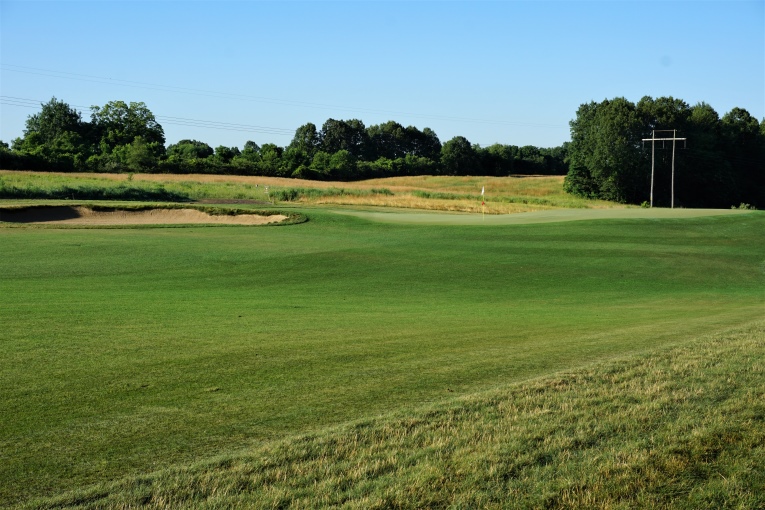
Another gem of a green complex is the small angled 18th; it’s the dickens to hit in either two… or three!
As you play the course, you start to understand where you can – and can’t – miss shots. The shots you are asked to hit seem within reason so you aren’t overwhelmed. Neither is the margin for success and failure razor thin and there are no water hazards on the course. Rather, after a few rounds you glean the situation and learn to play the course better. This is what great architecture is truly about: stimulating the player to have another go-around. This is art while most modern architecture errs by taking the easy way out and beating a player into the ground.
Needless to say, the world’s best courses, including Barnbougle Dunes, Rock Creek, Tara Iti, and Pacific Dunes make golfers itch to go play. Given that those four were built with the help of these same guys, … is it really a surprise that Stoatin Brae turned out so well? Not to this writer. Of course, some of their works are difficult to access. Here, you are getting grade A design talent at a resort that charges a reasonable fee in hopes it will earn your return business for years to come.
Holes to Note
First hole, 360 yards; This opener encapsulates the design theme found throughout the round: width off the tee with the challenge stiffening at the green. Of course, there is always a preferred spot from which to approach (in this case, the right center of the fairway is optimal) and hole locations along the back perimeter are significantly more challenging. The first at Stoatin Brae represents a design ideal: enough room for the bogey golfer to have fun while possessing teeth to challenge the accomplished player. Brian Schneider contends that the prudent play early in the round, when the muscles are creaky, is to aim for the front edge of the green. No harm comes from being just short or just on but things can turn ugly quickly for an approach that saunters just a bit long – and down. All in all, a perfect opener that bares a passing resemblance in how boldly you approach the green at the mighty first at Pine Valley.

It’s the first of many superb clean horizon lines. That little bowl front left dictates that approaches played from right center are best.
Second hole, 225 yards; The first of five one shot holes is the longest and plays across a broad gully to an offset green that slopes from front left to back right. At 8,600 square feet, it joins the fourth as the biggest green on the course but the golfer can’t quite see the entire putting surface as the green is cocked at a near 45 degree angle to the tee and drifts behind the hill to the right. The Old Trooper who grew up shaping his shots will especially appreciate the old fashioned charm presented here where a fade does quite nicely.

Today’s front right hole location is neatly presented but the optics become less clear as the hole moves back and right.
Third hole, 435 yards; The landscape becomes nothing but pure golf when the player enters the prairie that comprises a majority of the course’s 130 acres … and what a view! Short right and long left bunkers define the challenge from the tee and one is certainly encouraged to swing out. Alister MacKenzie always groused that cramped golf produced cramped mind and that is mercifully absent at Stoatin Brae. This kind of invigorating, expansive golf is in marked contrast to other offerings in the state. The exchanges during construction between Jon Scott and Brian Schneider helped to conspired to create one of the standout greens.

Fit for a windy site, the 3rd green is open and the golfer is free to create whatever sort of approach shot he deems best for the day’s conditions. Of course, a false front and the pocket in the putting surface near the right bunker become judge and jury for playing the proper shot.
Sixth hole, 565 yards; This is an interesting hole for what it does and doesn’t have. A broad 70+ yard fairway doesn’t feature central bunkers or cross hazards that slash directly into the line of play. As Brian Slawnik notes, ‘Sometimes it is more interesting to give the golfer a big field and let them mess up on their own.’ Here, the flag, silhouetted against the nearby forest, comprises an attractive moment and stands in fine contrast to the long views afforded by the skyline greens elsewhere.
Seventh hole, 215 yards; Walking to the tee, a beautiful vista unfolds as the low tee in the foreground gives way to a well-bunkered one shotter that climbs a gradual slope. The golfer does well to take advantage of what can be gleaned on the walk because on the tee the view becomes muddled courtesy of a high-lipped bunker positioned some 65 yards short of the green. Renaissance Design didn’t need to build the lip that high but did and it’s indicative of what the four architects view as important. Mystery? Yes. Room to play ground shots? Absolutely. Perfect visuals? Not so much.

As one leaves the 6th green and walks toward the 7th tee, all can be seen, including the putting surface.

This exceedingly well placed bunker obscures the view from the tee of much of the putting surface while simultaneously creating depth perception issues.
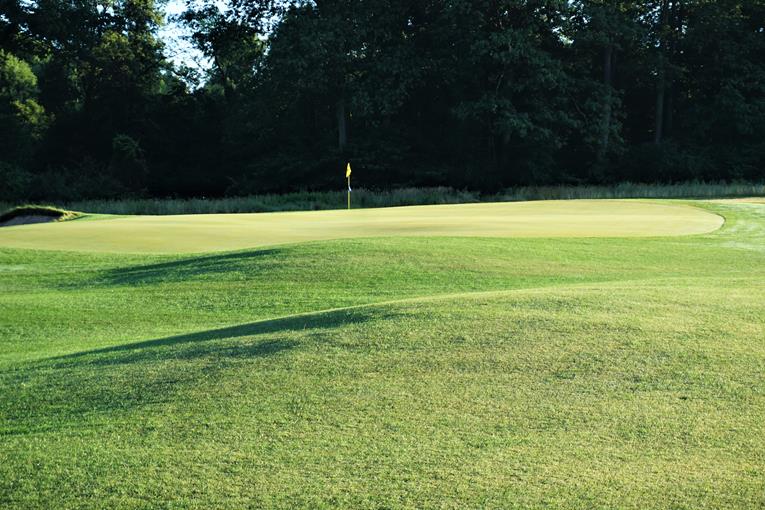
Short of the green, these two mounds and the ground’s right to left tilt largely determine the outcome of one’s tee ball. This is yet another example of the architects giving the player plenty of room to operate and the player thinking, ‘I will do better next time.’
Eighth hole, 345 yards; A wildly irritating teaser, where the golfer on the tee assumes that there must be a way to take advantage of this short, downhill two shotter. Talons come out and hope soars but an offensive posture more likely than not quickly erodes into a cowering, defensive one for anything less than a perfect drive at the left corner of the green. It’s the smallest green on the course and a string of four bunkers along the right defend it. Of course, warning signs are not provided and the green lays peacefully on the ground. The fact that it is open in front signifies opportunity, not treachery. And yet, golfers steer away from the bunkers to inadvertently worsen playing angles into the long, narrow green. Any approach played from the left portion of the fairway just a smidgen long of central hole locations is aided by the green’s slight front to back slope and will likely be collected by a hidden back right bunker. Any course in Michigan would love to claim this design standout for itself, the hole is that good.
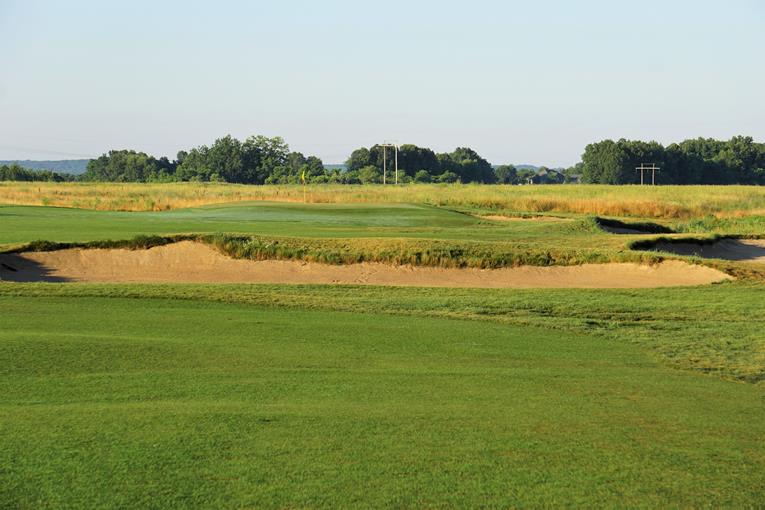
Trial & error suggest it is very much worth bunting a tee ball 200 yards down the hill and laying up in front of this cross hazard. The primary benefit is to guarantee an approach down the axis of the long, narrow green.

Even from 20 yards short, the open green looks benign but it is the smallest target one faces all day. To make matters more tenuous, it plays smaller than its 3,400 square feet, as we see below.

As seen from back right, this hidden bunker lurks with evil intent and the fact that the green slopes toward it is one of the reasons why it is among the most trafficked bunkers on the property.
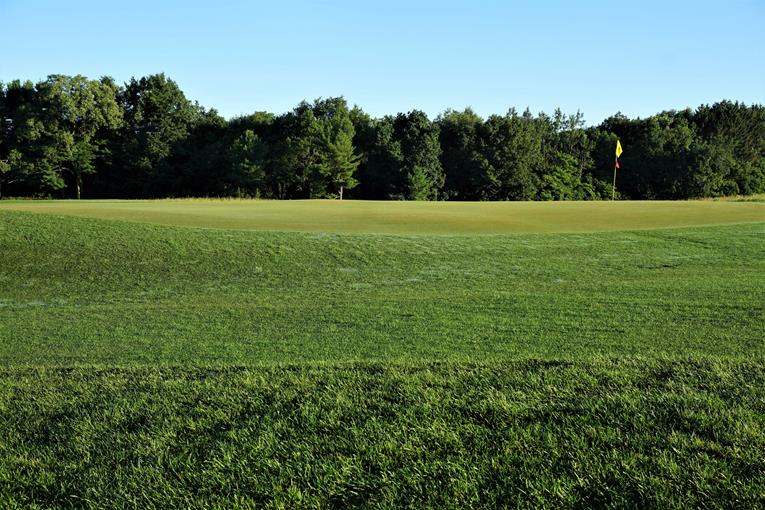
Conversely, from the back left, the bent grass green rolls over the side to shunt slightly errant approach shots. This perspective also captures the green’s slight tilt from front to back.
Tenth hole, 335 yards; For the next hour or so the golfer does battle across the most compelling portion of the property. For sure, he marvels at how much good golf emerged from this 45 acres. Part of his appreciation stems from what preceded these six holes. The contrast between the prairie and this corner is excellent and together they provide a complete offering. Put another way, if the entire course was like this section, the author thinks that the golf might suffer. Certainly, the walk would be much more difficult. As it is, the golfer considers 36 holes in a day a viable option. The rambunctious tenth is visually more intimidating as a consequence of the prairie golf. Thankfully, given its modest length, the hole shouldn’t play as hard as it looks, which a design concept that Alister MacKenzie supported and that Renaissance has carried on. Where to aim from the tee isn’t readily apparent but in a perfect use of the brow of a hill, a drive long left over it opens up the approach to an angled green. When people talk about ‘a well-designed hole’, this is what they mean: the architects incorporated a natural feature (brow of a hill) into a hole and then built man-made features (bunkers, angled green) that compliment it. That is all you can ever ask an architect to do!

Most players though prefer to hit to where they can see but that leaves this dreadful angle into today’s back right hole location.
Eleventh hole, 165 yards; The golfer walks away from his round here with a new found appreciation for how most designs from 1975 to 2000 were over-shaped and over-wrought and routinely featured containment mounds and framing. What a waste of time and money as such elements add nothing to the golf while distorting nature. Look at the photograph below of this green and the elegant manner in which it occupies the shoulder of the hill. Now imagine it with mounds behind and be thankful for this crew as opposed to someone who would have been more heavy-handed.
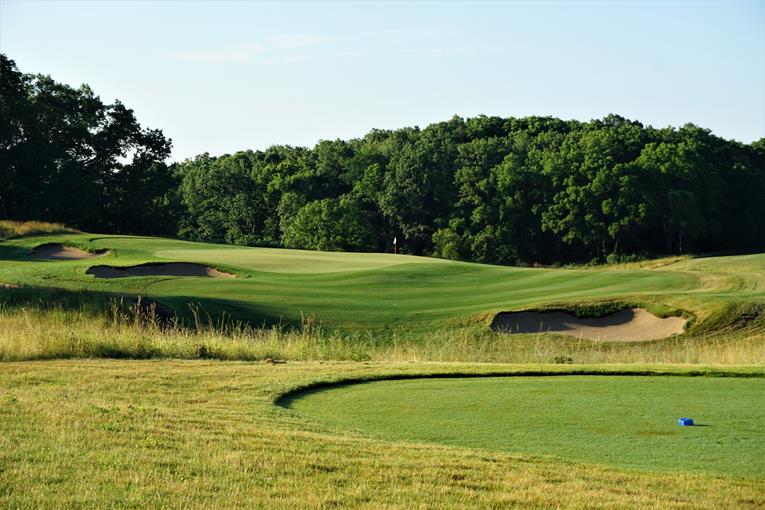
A false front and green that rolls off to the right make getting close to this right hole location problematic. A back left hole location is more user friendly and the golfer learns with time when to thrust and when to parry.
Twelfth hole, 380 yards; This proved to be the crucial moment in the routing process. Renaissance could visualize the prior and subsequent holes but there appeared no easy way to get from eleven to thirteen because of a prominent hillock that had to be scaled here. As the debate continued over possible alternatives/solutions, Slawnik proposed one major cut to the land for the entire project. That idea carried the day and the execution of lowering the fairway some twelve feet was carried out with aplomb. That’s minimalism for you: doing what it takes to make it look like no earth was moved. With that one bold move, the rest of the golf flowed naturally. Both the tee ball and approach are genuine additives to the course.

The 12th features a thrilling drive over the left bunker. If hit well enough, the tee ball will catch the downslope on the far side and bound merrily toward the green.
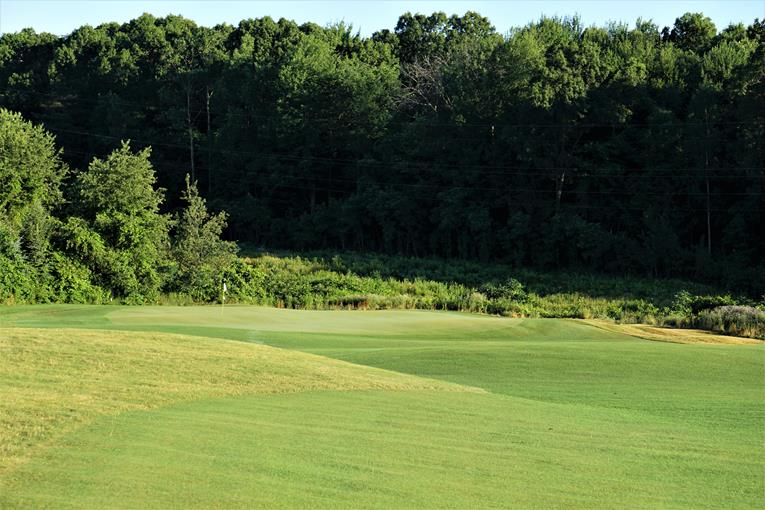
The downhill approach to an open green passes with flying colors the litmus test of wanting to hit a small satchel of balls to get the approach just right. Too many modern courses look great in pictures but once there, the shots never quite measure up to the photograph.
Thirteenth hole, 460 yards; A sure fire way to turn an uphill bruiser into something more engaging is to cap it with a green that enjoys punchbowl qualities. One of the first to do so in America was C.B. Macdonald at National Golf Links of America and the finest the author has seen is the sixth at Whippoorwill outside of New York. Here, a look at the scorecard suggests a house of pain. However, if you play the hole properly – a draw off the tee and another one that lands on top that then swoops onto – or is it into? – the green, the hole produces a moment of joy and immense satisfaction.

A huge drive leaves this approach shot to a left hole location, though the start of the green is evident 35 yards to the right.
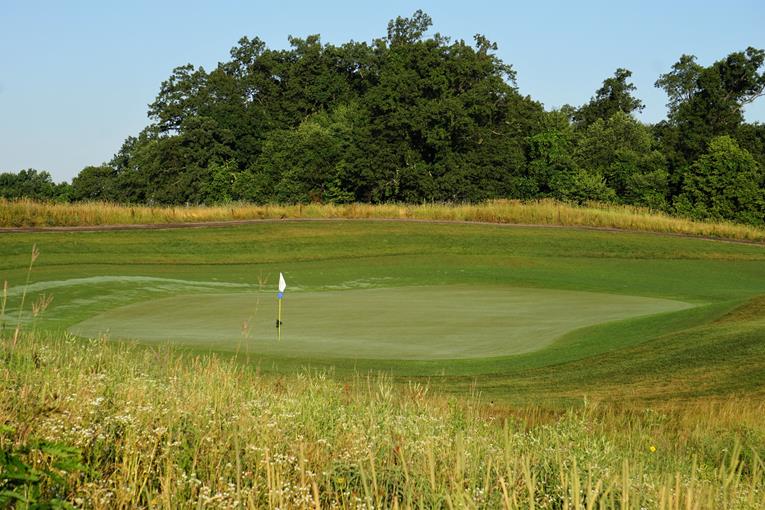
Leaving the 13th, its punchbowl qualities become evident. It like the 1st, 2nd, and 12th greens is bunkerless.
Fourteenth hole, 145 yards; An ideal follow up to the beastly uphill thirteenth, this short one shotter plays downhill and everything is in plan view. Or is it? Look closely at the two photographs below.

In this mid-morning picture, the 14th appears to be a relatively straightfoward shelf green benched into the hillside.

However, the morning dew highlights the rolls and the soft front and right side. As is often the case at Stoatin Brae, the golfer does well to aim toward the middle of the green and putt out to the edges.
Fifteenth hole, 375 yards; Similar to the tenth, the architects use a modest length two shotter to traverse a dramatic valley. While the tee ball lingers in the mind, the approach is awfully fine too, with a large bunker employed to confuse.

On the far hillside one of the course’s largest bunkers extends thirty yards from the green toward the player. The bunker is actually removed from the putting surface by 10 yards and gaining depth perception is awkward. A high right back plateau in the green affords several tricky hole locations.
Sixteenth hole, 540 yards; As well as any, the sixteenth hole demonstrates the course’s setting above the river valley and the architects took maximum advantage by building a slow, unfolding three shotter. As a nice change, the sixteenth fairway is shared with the third and Renaissance floated a central hazard into the direct line of play. A big drive brings the green within reach in two and the walk down the fairway toward the skyline green is one to savor.
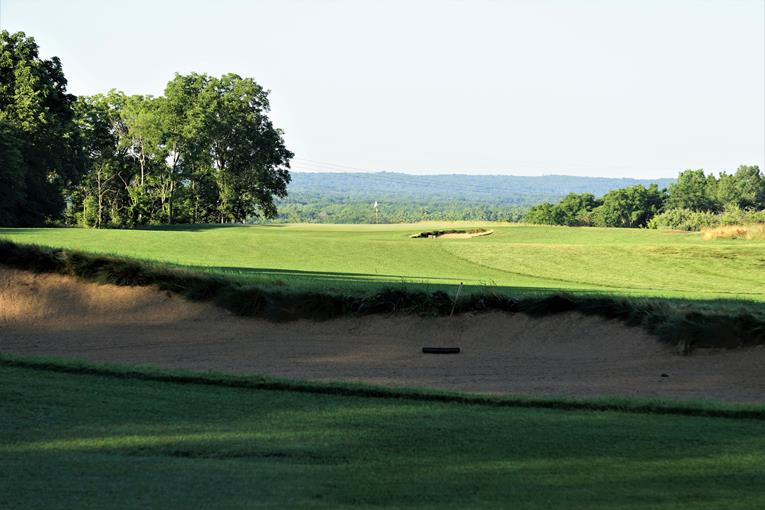
This 230 yard shot to a skyline green is so appealing that the golfer hardly notices that he has returned to the prairie.
Seventeenth hole, 170 yards; One of the author’s handful of favorite penultimate holes in America is the 125 yarder at St. George’s on Long Island because it tests nerves as well as how clearly the golfer is thinking. A long one shotter is too often about execution versus actually trying to play a shot. This hole like the illustrious 17th at St. George’s is played from a valley to a knob green. From the 6,271 yard set of tees most people will play, it measures 135 yards. Yet, its defenses are plentiful and substantial as seen below.
The aforementioned par 5 Home hole concludes the round meaning that the fifteenth is the last two shotter that the golfer faces. Similar to what they learned at Pacific Dunes, Renaissance Design chewed up the flatter portion of the property by placing all four of the par 5s in that milieu. It makes for an exciting finish as much can transpire over the final three holes.
Overall, there is nothing not to embrace about playing here. The golfer gets the best of both worlds: an intriguing mix of prairie and big hills. The author’s only regret is that there aren’t a few more shared fairways like the sixteenth and third. Finding your ball in the impenetrable native grasses is unlikely, so the resort needs to be vigilant about keeping the playing corridors broad. The prairie grass is a wonderful accent to the golf but if it comes into play for anything but a rank bad shot, the continuum of playing with the same ball and the pace of play are ruined.
Leave it to the Scott family to get things right. They have done so for nearly 55 years and there is no sign that this American story is slowing down. In fact, the addition of Stoatin Brae to their golf offering means the Gull Lake View Golf Club & Resort has reached an all-time high.
The End





